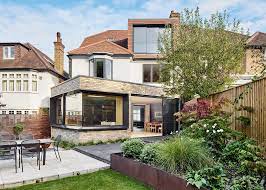Most homeowners think every renovation needs Planning Permission. That’s not true. Some projects fall under Permitted Development Rights. That means you can build without waiting months for council approval. Understanding which projects qualify for Permitted Development in London, or learning how architects london determine whether your specific project needs permission or not, helps you see the timeline and cost difference it creates.
If you want to know more about how design and build company professionals navigate Permitted Development rules, or understand when you still need Building Regulations approval even without Planning Permission, you’ll see why getting this sorted upfront matters. Permitted Development exists precisely so homeowners can do certain work without bureaucratic delays. But the rules are specific. Not everything qualifies.
What Permitted Development Rights Actually Are
Permitted Development Rights allow certain types of building work to happen without Planning Permission. The government decided these developments are minor enough or specific enough that they don’t need planning approval.
The rationale is straightforward. If work doesn’t significantly impact the neighborhood or planning concerns, why require months of council review? So they created rules allowing it.
But here’s what catches people out: Permitted Development doesn’t mean you can do whatever you want. There are strict limits. Size limits. Location limits. Type limits. Get these wrong and suddenly you need permission you weren’t expecting.
Also, Permitted Development doesn’t mean you skip Building Regulations. Building Regulations still applies. You still need inspections. You still need to comply with safety and technical standards. You just don’t need Planning Permission.
Loft Conversions and Permitted Development
This is where Permitted Development helps London homeowners most. Many loft conversions qualify.
If your loft conversion meets specific criteria, you can convert without Planning Permission. You’re still doing Building Regulations. You’re still getting inspected. But you skip the Planning Permission process.
This saves months. Planning Permission takes 8 to 12 weeks minimum. Sometimes longer. Skipping it means your project moves faster.
But not all loft conversions qualify. If you’re in a Conservation Area, rules change. If your building is listed, rules change. If your loft conversion exceeds certain dimensions, it won’t qualify.
Architects london know these rules deeply. They look at your specific property. They tell you whether your loft conversion qualifies. If it does, they manage Building Regulations. If it doesn’t, they guide you through Planning Permission.
Single Storey Extensions and Permitted Development
Some single storey extensions qualify for Permitted Development. But conditions are strict.
The extension can’t be more than 4 meters deep. It can’t exceed a certain percentage of your original garden area. It can’t have certain types of roofing. The list of technical requirements is long.
Also, your location matters. If you’re in a Conservation Area, different rules apply. If you’re in certain areas of London, additional restrictions exist.
A design and build company that understands Permitted Development can tell you upfront whether your extension qualifies. If it does, you save months. If it doesn’t, you at least know what to expect.
Double Storey Extensions and Permitted Development
Here’s the straightforward answer: double storey extensions almost never qualify for Permitted Development. They’re too visually prominent. They change your property’s appearance too much.
Double storey almost always means Planning Permission is required. There’s no shortcut. You design it. You submit it. You wait for council decision.
This is why double storey extensions take longer. Planning Permission adds months to the timeline.
Conservation Areas and Permitted Development Complications
London has lots of Conservation Areas. If your property sits in one, Permitted Development rights become more restricted.
Loft conversions often still qualify. But single storey extensions might not. The council wants to protect the area’s character. So they limit what you can build without permission.
A design and build company with experience in Conservation Areas knows these restrictions. They know what’s possible. They design accordingly.
Listed Buildings and Permitted Development
If your building is listed, Permitted Development rights get severely restricted. Almost everything needs consent.
Loft conversions become complicated. Extensions need consent. Window changes need consent. Practically any visible change needs approval.
This is where working with architects london who understand listed building requirements becomes essential. They know what you can and can’t do. They navigate the consent process.
When You Still Need Building Regulations
This is crucial: Permitted Development doesn’t mean you skip Building Regulations.
Even if your project qualifies for Permitted Development and you don’t need Planning Permission, you still need Building Regulations approval. You still need inspections. You still need to comply with technical standards around structure, fire safety, ventilation, electrical work, plumbing.
Building Regulations approval still takes time. Usually 8 to 12 weeks minimum depending on complexity. But it’s usually faster than Planning Permission plus Building Regulations.
How Architects London Determine What Qualifies
A professional architect doesn’t guess about Permitted Development. They assess systematically.
First, they look at your property. Is it in a Conservation Area? Is it listed? Is it on a corner plot? Is it a terraced house or detached? These factors change what qualifies.
Second, they look at your specific proposal. How big is it? How deep? What’s the roof type? What percentage of the garden would it cover? These measurements determine whether it qualifies.
Third, they check local authority guidance. Different councils sometimes have different interpretations. They check with your specific local authority about your specific property.
Only then do they tell you whether you need Planning Permission or whether Permitted Development applies.
Common Misconceptions About Permitted Development
People get confused regularly. One misconception: if it’s a small project, it’s Permitted Development. Not automatically true. Size is one factor but there are other requirements.
Another misconception: if my neighbor built without permission, I can too. Not true. Just because someone got away with something doesn’t mean it’s legal for you.
Another misconception: Building Regulations means I don’t need Planning Permission. Not true. They’re separate systems.
Another misconception: Permitted Development means I can build whenever I want. Not true. You still need to follow technical requirements. You still need inspections.
The Timeline and Cost Advantage
If your project qualifies for Permitted Development, you save significantly on timeline. No Planning Permission wait. Just Building Regulations approval.
You also might save money on planning consultant fees. Though you still pay for architect or designer services.
The real advantage is speed. You want to convert your loft or build your extension. Permitted Development lets that happen faster.
When You Actually Need Professional Advice
Don’t assume your project qualifies. Even if it seems like it should.
A design and build company or architect london should assess your specific situation. They know the rules. They know your local authority’s interpretation. They give you accurate guidance.
Getting this wrong means starting work then discovering you needed permission you didn’t get. That’s a disaster. Work stops. You’re in violation. You’re looking at enforcement action potentially.
Getting it right from the start protects you and keeps your project moving.


